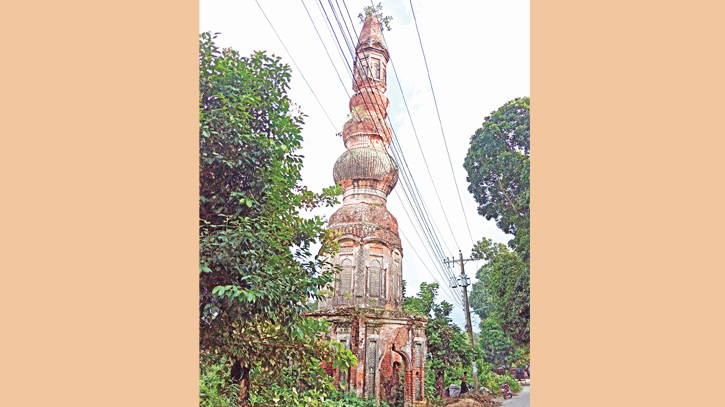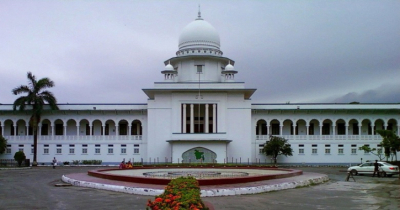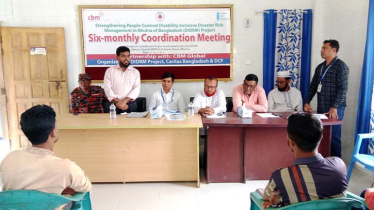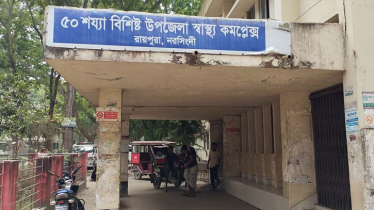
Photo : Messenger
Manikganj, renowned for its historic architectural treasures, is on the verge of losing a significant piece of its heritage, the iconic "Motter Moth."
The distinguished construction style and craftsmanship that the Motter Moth boasts have earned it a revered reputation nationwide.
Situated in the quaint village of Matta, a mere one and a half miles east of Manikganj district headquarters, this historical monument stands tall as a colossal monastery, with an impressive age of over 250 years. Known locally as "Matt Math," the Motter Moth is a vital part of Manikganj's rich archaeological and historical heritage.
Legend has it that approximately 250 years ago, the infamous zamindar Hem Sen, mourning his daughter's marriage, constructed this magnificent math on a substantial 15 percent of land along the banks of Nital Dighi in the Matta region. He did so with the intent that his daughter, from a distance, could gaze upon the grandeur of the math and feel closer to her father. Notably, artisans from Iraq were brought in to craft this extraordinary monastery, which soon gained renown as one of the prominent landmarks in undivided East Bengal, owing to its towering stature and artistic splendor.
Regrettably, in the year 1326, a devastating storm during the month of Ashwin caused a 20-foot section of the monastery to break off and plunge into the Nittal Dighi. This calamity led to the disappearance of the five golden urns that once adorned the monastery's pinnacle.
Despite Hem Sen's tyrannical rule as a zamindar, he displayed his patriotism by erecting this monastery to honor his father's memory upon his demise.
Md Solaiman, a resident of Matt village, revealed that this monastery has graced their land for countless years, a testament to the erstwhile zamindars who have since left the country due to partition and other circumstances. Visitors from far and wide, both domestic and international, continue to flock to see the grandeur of the Motter Moth. However, the passage of time has taken its toll on the monastery, with each passing day contributing to its gradual deterioration.
Saifuddin Nannu, the head of the Bengali department at Khan Bahadur Awlad Hossain Khan College, emphasized the monastery's paramount importance as a custodian of Manikganj's history and tradition. Notably, scholars who have explored the Motter Moth have marveled at its unique architectural style, distinct from other monasteries in the country. Its construction technique stands out as exceptional and entirely different. Nannu called upon all concerned individuals to unite in a collective effort to preserve this invaluable piece of history.
Despite the challenges posed by time and nature, the Motter Moth continues to draw admirers from diverse corners, its significance echoing through the pages of Manikganj's history. The urgent need for preservation is underscored by its unique architectural style, distinct from other monuments in the region, making it a custodian of the area's rich heritage.
The Motter Moth stands not only as a symbol of artistic magnificence but as a living link to Manikganj's past. As concerned individuals, locals, scholars, and authorities alike, let us unite in a shared commitment to ensure that this iconic monument endures for generations to come. In the face of imminent peril, the Motter Moth beckons us to stand as stewards of history, forging a legacy of preservation and appreciation for the cultural treasures that define our identity.
Messenger/Sami/Sun Yath








